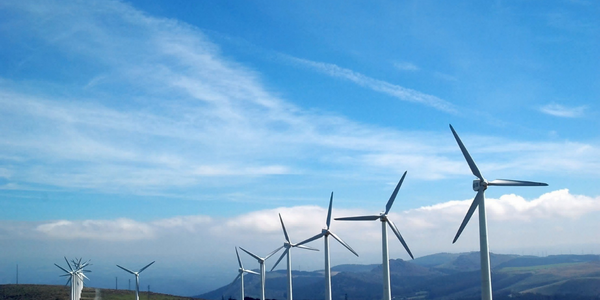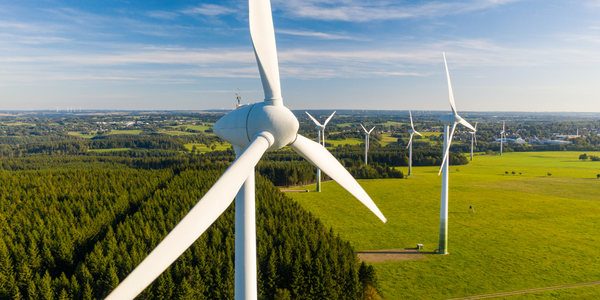公司规模
Large Corporate
地区
- America
国家
- United States
产品
- COMSOL Multiphysics®
技术栈
- High-Performance Computing (HPC)
- COMSOL Multiphysics®
- Intel® Xeon® Ivy Bridge processors
实施规模
- Pilot projects
影响指标
- Cost Savings
- Environmental Impact Reduction
- Innovation Output
技术
- 分析与建模 - 数字孪生/模拟
- 分析与建模 - 预测分析
- 分析与建模 - 实时分析
适用行业
- 可再生能源
- 运输
适用功能
- 流程制造
- 产品研发
用例
- 数字孪生
- 质量预测分析
- 过程控制与优化
服务
- 软件设计与工程服务
- 系统集成
关于客户
The National Renewable Energy Laboratory (NREL) is a leading research institution focused on advancing renewable energy and energy efficiency technologies. Supported by the U.S. Department of Energy, NREL conducts cutting-edge research in various fields, including biofuels, solar energy, wind energy, and energy systems integration. The laboratory collaborates with industry, government, and academia to develop innovative solutions that address the world's energy challenges. NREL's research in biofuels aims to make renewable energy sources more cost-effective and competitive with traditional fossil fuels, contributing to a sustainable energy future.
挑战
The production process of biofuels from plant-based materials poses significant economic barriers to widespread use. Despite the benefits of biofuels being renewable, clean-burning, and carbon-neutral, their availability is limited, particularly for vehicle use. As of 2014, only 2% of retail fueling stations in the U.S. offered ethanol-based fuel E85. The National Renewable Energy Laboratory (NREL) aims to overcome these barriers by gaining a better understanding of the physical processes behind biofuel conversion. Supported by the Computational Pyrolysis Consortium, NREL is developing computational models that accurately represent biomass particle geometry to improve reactor design and operation for mass production of biofuel.
解决方案
NREL researchers are using multiphysics simulation to optimize the biofuel conversion process, specifically focusing on fast pyrolysis, a thermochemical process that breaks down biomass particles at high temperatures. By developing a model in COMSOL Multiphysics® that takes into account the internal microstructure of biomass particles, the team aims to improve heat and mass transfer during pyrolysis. This involves characterizing the external morphology and internal microstructure of biomass using imaging methods and generating 3D models for simulation. The simulations, run on a high-performance computing (HPC) cluster, evaluate heat transfer and mass transport in biomass particles, providing insights into optimizing biofuel production processes.
运营影响
数量效益

Case Study missing?
Start adding your own!
Register with your work email and create a new case study profile for your business.
相关案例.

Case Study
Remote Monitoring & Predictive Maintenance App for a Solar Energy System
The maintenance & tracking of various modules was an overhead for the customer due to the huge labor costs involved. Being an advanced solar solutions provider, they wanted to ensure early detection of issues and provide the best-in-class customer experience. Hence they wanted to automate the whole process.

Case Study
Vestas: Turning Climate into Capital with Big Data
Making wind a reliable source of energy depends greatly on the placement of the wind turbines used to produce electricity. Turbulence is a significant factor as it strains turbine components, making them more likely to fail. Vestas wanted to pinpoint the optimal location for wind turbines to maximize power generation and reduce energy costs.

Case Study
Siemens Wind Power
Wind provides clean, renewable energy. The core concept is simple: wind turbines spin blades to generate power. However, today's systems are anything but simple. Modern wind turbines have blades that sweep a 120 meter circle, cost more than 1 million dollars and generate multiple megawatts of power. Each turbine may include up to 1,000 sensors and actuators – integrating strain gages, bearing monitors and power conditioning technology. The turbine can control blade speed and power generation by altering the blade pitch and power extraction. Controlling the turbine is a sophisticated job requiring many cooperating processors closing high-speed loops and implementing intelligent monitoring and optimization algorithms. But the real challenge is integrating these turbines so that they work together. A wind farm may include hundreds of turbines. They are often installed in difficult-to-access locations at sea. The farm must implement a fundamentally and truly distributed control system. Like all power systems, the goal of the farm is to match generation to load. A farm with hundreds of turbines must optimize that load by balancing the loading and generation across a wide geography. Wind, of course, is dynamic. Almost every picture of a wind farm shows a calm sea and a setting sun. But things get challenging when a storm goes through the wind farm. In a storm, the control system must decide how to take energy out of gusts to generate constant power. It must intelligently balance load across many turbines. And a critical consideration is the loading and potential damage to a half-billion-dollar installed asset. This is no environment for a slow or undependable control system. Reliability and performance are crucial.

Case Study
Airport SCADA Systems Improve Service Levels
Modern airports are one of the busiest environments on Earth and rely on process automation equipment to ensure service operators achieve their KPIs. Increasingly airport SCADA systems are being used to control all aspects of the operation and associated facilities. This is because unplanned system downtime can cost dearly, both in terms of reduced revenues and the associated loss of customer satisfaction due to inevitable travel inconvenience and disruption.

Case Study
Remote Monitoring and Control for a Windmill Generator
As concerns over global warming continue to grow, green technologies are becoming increasingly popular. Wind turbine companies provide an excellent alternative to burning fossil fuels by harnessing kinetic energy from the wind and converting it into electricity. A typical wind farm may include over 80 wind turbines so efficient and reliable networks to manage and control these installations are imperative. Each wind turbine includes a generator and a variety of serial components such as a water cooler, high voltage transformer, ultrasonic wind sensors, yaw gear, blade bearing, pitch cylinder, and hub controller. All of these components are controlled by a PLC and communicate with the ground host. Due to the total integration of these devices into an Ethernet network, one of our customers in the wind turbine industry needed a serial-to-Ethernet solution that can operate reliably for years without interruption.

Case Study
IoT-based Fleet Intelligence Innovation
Speed to market is precious for DRVR, a rapidly growing start-up company. With a business model dependent on reliable mobile data, managers were spending their lives trying to negotiate data roaming deals with mobile network operators in different countries. And, even then, service quality was a constant concern.







